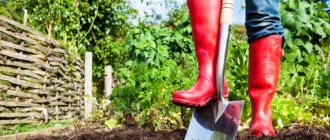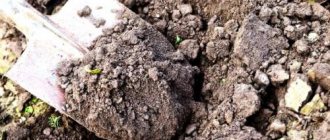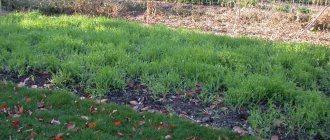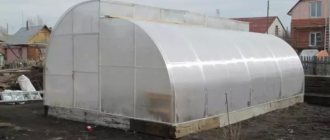Is it necessary to dig up the garden in the fall - benefits for increasing fertility
After all the harvest has been harvested, you need to put the beds in order. Some summer residents are interested in the question of whether it is necessary to completely dig up the garden in the fall, and what is the best way to dig up the earth before the onset of winter. Proper execution of the work largely depends on the type of soil and the type of tools with which the process will be performed.
When is it better to plow the garden, in spring or autumn?
According to gardening experts, deep digging of the soil in the autumn is much more effective compared to spring procedures. The procedure helps eliminate most problems, especially for regions with poor soil. This method is called “fall plowing”, when after digging the weeds, turned upside down, become chilly and freeze. It is recommended to carry out this treatment annually, then the result will be noticeable.
What benefits does cultivating the land in autumn provide?
If you dig up the soil regularly in the autumn, after the entire crop has been harvested, the quality of the soil will improve. Gardeners with many years of experience advise performing the procedure at this time because:
- the surface layer is disinfected, harmful larvae and microorganisms are eliminated;
- the soil becomes looser;
- ventilation of the lower layers occurs;
- easy application of fertilizers is ensured;
- the roots of the weeds freeze, their number in the garden decreases;
- the fertile layer is deepened by placing compost from weeds removed from the beds onto the lower layer of soil;
- The land is being prepared for spring planting.
After the snow melts, the soil dries, the beds will be ready for planting seeds. You just need to loosen the lumps. Such processing, carried out in the autumn, has ancient roots, because it greatly facilitated the work of the farmer when there were no modern devices that would help with mechanical digging.
Digging up the earth for the winter
During digging, the soil is prepared for winter. This period is good for adding manure, humus or compost to the site. In farms where plants suffer from wireworms, mole crickets, Colorado potato beetles, and other pests, digging up the soil for the winter will help get rid of larvae and adult insects that lie in the lower layers of the soil. In this case, you need to turn it over into the ground to a depth of 20-25 cm.
Dependence on soil type
In order to understand whether it is necessary to dig up the garden in the fall or in the spring, you need to find out what type of soil is in the garden. At a summer cottage located in a region with heavy clay soils, fertility can be increased mechanically. However, you need to dig the soil without breaking up the lumps. After snow falls, pieces of soil will begin to become saturated with oxygen. In spring, the soil will be more loose and supplied with nutrients. For wet soil, fertilizers are not so important, so with this type of soil it is better to dig up the beds in the spring months so that the remaining moisture evaporates.
When to dig a garden in the fall
It is important to consider the timing in which the garden will be processed in the autumn. In different regions, the time when gardeners dig up their garden may vary slightly. After all the beds have been removed, the tops should be chopped, evenly distributed over the surface of the earth and plowed manually or mechanically. It is advisable to plan all work for mid-late autumn before severe frosts. Therefore, experienced gardeners answer positively the question: is it possible to dig the ground after covering.
What's the best way to dig?
The method of autumn treatment depends on how much area needs to be dug. If we are talking about a small area, then you can loosen the soil in the fall using a plow or shovel. This method is called “manual” because it is performed without the use of mechanized equipment. The advantage of this treatment is that the fertile layer does not suffer serious damage, but plowing may not be effective enough and will take a lot of time and effort from the gardener.
If you choose a mechanical method for digging, you can dig up the soil in the garden in the fall with a walk-behind tractor with adjustable plowing depth. It is not recommended to turn the soil more than 25 cm. In this case, beneficial microorganisms may be damaged. Now there are small tractors with rotary plows that allow soil to be processed without destroying the lower layers.
Treatment of areas with trees
When answering the question of whether it is necessary to dig up a vegetable garden in the fall near trees, experts advise treating the soil carefully so as not to damage the small roots, which will later become seedlings-layers. This procedure is carried out no later than the end of September. It is not recommended to dig up the soil near bushes and trees to a depth of more than 15 cm, and after processing, you should fill the space with mulch or dry leaves so that the roots of the plants do not freeze in winter.
Video
Found an error in the text? Select it, press Ctrl + Enter and we will fix everything!
What are the benefits of cultivating the soil in the fall?
First of all, this simplifies and facilitates planting work in the spring. Even those who are against such an event agree with this. After all, when the last vegetables are collected, the cold weather is still quite far away. And if the weather is warm, the beds become overgrown with weeds. This means that if you don’t remove them now, then next season it will be more difficult to fight the dominance of weeds. What other advantages does this procedure have ?
- The soil becomes softer and looser;
- The land cleared of weeds is saturated with oxygen and moisture;
- In the spring, such soil warms up faster than untreated soil in the fall;
- When cultivating the soil in autumn, a good water-air regime is created for plants;
- The thermal properties of the soil also improve in the spring, the soil will ripen faster for planting.
One of the advantages of autumn work is that the remains of stems, stones and other debris were removed ahead of time. All this makes work in the garden easier in the spring. In addition, tillage in the fall is usually carried out with the rotation of the soil layer. This helps fight pests and pathogenic bacteria. After all, they overwinter in the upper layers of the soil. And after digging up the earth, some of them will simply die from freezing in the spring.
When and how best to plow the land: rules and advice
In this article you will find useful tips on when is the best time to plow the land and in what way.
Plowing of the land in large areas is carried out in spring and autumn. Before embarking on such an important event, it is necessary to understand its essence in detail. There is a common belief that plowing helps reduce the number of pests and weeds on the site. Also, agricultural workers prefer to plow the land in order to fertilize it.
The above opinions are certainly true, but they are far from the only ones. Among the key reasons for plowing a plot of land are:
- excessive soil compaction or erosion;
- presence of pests and weeds;
- salinization
The last reason is the most common. If you do not plow the soil periodically, salt will accumulate inside the soil. This is especially familiar to residents of regions with high humidity. Excessive salinity negatively affects crop yields.
Additionally, you should know that the loosening process leads to the saturation of the soil with oxygen. This process is important primarily for beneficial microorganisms. They have a direct impact on soil fertility indicators.
Optimal time for plowing
Experienced agronomists recommend plowing the garden once or twice a year. As noted above, spring and autumn are optimal for this. It is necessary to understand that the time of year also leaves its mark on the described process.
Autumn plowing of the site deserves increased attention. It is at this time that the land is being prepared for the next harvest year. Saturation of the soil with oxygen causes many weeds to die off. Closer to spring, a natural restoration of beneficial bacteria occurs, which has a great effect on the fertility of the soil.
Spring plowing
In the spring, the garden is also plowed. During this period, soil reservation is carried out. This work takes place immediately after the top layer of soil has dried sufficiently. For plowing large gardens, it is better to use a tractor cutter. At the same time, it is not at all necessary to plant it deeply. In this case, the soil is loosened safely, because all its beneficial bacteria remain absolutely unharmed.
Regardless of the time of year, you should definitely know how to plow the land correctly and what secrets this process has. There are both manual and mechanical methods of plowing the garden. For small areas it is not necessary to call a tractor. In this case, a walk-behind tractor will be sufficient. The appropriate technology allows for fairly deep plowing (up to 25 cm).
A tractor is necessary for large vegetable gardens. At the same time, the person who will manage it must have professionalism and appropriate experience. When choosing the type of tractor, it is necessary to take into account the properties of the soil itself. Sometimes the heaviest equipment simply cannot penetrate deep into the ground. Such tractors even sometimes sink in the soil, which is why plowing is not done properly.
When and why to dig a garden, how to dig beds correctly
Digging up a garden seems like a simple matter... But, as always, it’s not that simple. Questions arise: when is it better to dig up a garden in the fall or spring? When should digging be done? What if you don’t dig the beds at all?
Why dig soil in the garden: pros and cons
After digging up the soil, its fertility increases. This is especially noticeable after digging up clayey and uncultivated soil overgrown with grass. If the soil in the garden is sandy, loose, dries quickly and allows air to pass through well, then complete digging will not have a noticeable effect. In this case, it is enough to destroy the surface crust with a rake or shovel. The main task of digging is to eliminate weeds and pests. In addition, sometimes digging is required in order to fertilize the soil as efficiently as possible.
Advantages of digging up soil in the garden:
- harmful microorganisms are destroyed from the surface of the beds;
- the soil becomes loose, which promotes the activation of special bacteria that saturate the soil structure with nitrogen;
- the roots of weeds freeze, the volume of weeds in the area decreases, because their seeds go deeper into the ground during digging and cannot germinate until spring;
- the soil that reaches the surface from the depths contains a large amount of minerals and nutrients that future crops need;
- in the process of digging the earth, compost and other substances are introduced into the soil, enriching it with beneficial bacteria;
- ventilation of soil layers occurs;
- weeds move to the lower layers, rot and serve as additional fertilizer;
- adult individuals and larvae of pests living under the surface of the soil, when it turns over, find themselves outside and die from external factors (wind, sun, birds, etc.);
- During a drought, digging up the area helps preserve moisture;
- If there are trees on the territory, then their leaves fall into the soil during digging, after which they rot and saturate it with useful substances and minerals.
In addition, digging up the soil allows you to prepare the soil for planting crops.
However, this type of processing has disadvantages:
- Digging is hard physical work.
- When the soil layers are turned over, the pests in them change places. The soil contains spiders, microbes, and worms. Each species prefers to live at its own depth. When the environment changes, many living organisms die, which can negatively affect fertility. This is especially harmful to the soil if you dig beds not only in autumn or spring, but also at other times of the year.
Experts note that the elimination of beneficial organisms is the most significant drawback of digging up soil in the garden, so in some cases it is undesirable to resort to processing. For example, a plot of potatoes should not be dug up, because when growing this crop it is thoroughly hilled and weeded.
When is the best time to dig up a vegetable garden - timing
Experienced gardeners note that digging up soil in the garden in the fall is much more useful than in the spring. With this procedure you can quickly get rid of many problems. This is especially true in regions with dry soil.
This technique is called “fall plowing”. After it, the overturned weeds freeze and die. If you dig up your garden in the spring, the weeds may germinate again. Therefore, it is recommended to dig up the soil in the fall every year. This will allow you to achieve maximum results.
In the fall, you can not only dig up the garden, but also add compost, humus or manure to the soil. In gardens where crops often suffer from Colorado potato beetles, mole crickets, wireworms and other parasites, digging allows you to eliminate their larvae. To do this, the soil needs to be turned over to a depth of 20-25 cm.
In this case, it is necessary to take into account the timing of processing the site in the fall. The timing for this may vary in different regions. Everything depends on weather conditions. The general approach is this: you need to dig up the ground as late as possible in the fall, before the first heavy rains and frosts.
After harvesting, you need to chop the tops, distribute them in an even layer on the surface of the soil and dig up the soil manually or using a special tool (light digger) or equipment (motoblock). It is recommended to schedule the procedure for October-November as long as the temperature outside is above 0°C.
Digging the soil in the garden in the spring will have a beneficial effect on the yield of vegetables, as it becomes loose and saturated with oxygen. The time it takes to dig up the soil in the spring also depends on the weather conditions of a particular region. You need to dig up the soil in the spring no later than a week before planting vegetables in the garden. Unlike in autumn, in spring you can dig up the soil in the garden shallowly (up to 10cm).
How to properly dig up soil in a garden
A small vegetable garden can be loosened using a miniature plow. The advantage of such digging is that the fertile layers are not significantly damaged. However, manual plowing requires considerable physical effort.
To save effort and time when digging the soil in the garden, you need to follow the following digging rules.
First of all, make sure that the soil is sufficiently dry. If the soil is too wet or wet, you will waste a lot of effort and energy.
The readiness of the soil for cultivation can be determined in the following way. Take a lump of earth and throw it down from a height of one and a half meters. It should crumble. If instead it sticks to the soil, then it is not yet ready to be dug.
Then you need to choose a good tool. The handle of the shovel should be smooth and durable, with a polished finish and a V-shaped or T-shaped handle at the end. The bayonet blade of the shovel must be carefully sharpened - then you can quickly dig up the garden without any problems. The length of the shovel should correspond to your height, i.e. be 10 cm below shoulder level.
When is autumn digging harmful?
If the soil in the garden is “living ,” drained, loose, with a large number of earthworms and microorganisms, then there is no need to disturb its structure, and such areas are not dug up in the fall.
Do not dig the soil in the trunk circles of fruit trees deeper than 10-15 cm, since their small (dew) but most active roots are very close to the soil surface. When digging, most of these roots die. In such a situation, the tree “tries” to protect itself and in the spring a large amount of shoots will appear in the circle around the trunk.
When to dig a garden: autumn or spring
One of the most common questions gardeners have is when is it better to dig a vegetable garden - in the fall or in the spring. Here many are inclined to the first option. And someone insists on the second. Let's look at this in detail below.
A little about the right soil
It is believed that any plant can grow even through asphalt. However, this is a common mistake. It is important to understand that loose, well-fed soil is necessary for every crop. Moreover, it is not just loose, but fully structured. In it the plant will grow faster and more abundantly.
Signs of the right soil in which the crop will give maximum growth and yield:
- Good breathability;
- Rich in nutrients;
- The ability to store moisture for as long as possible and/or get rid of its excess;
- The ability to firmly hold the root system of a plant so that it does not get blown out by the wind.
Is it necessary to dig a garden?
It is necessary to dig a vegetable garden if the soil is heavy, clayey or loamy. The fact is that such soils retain moisture for a long time and have low air permeability. When you dig up heavy soils or those soils where the groundwater is high, you create a microporous soil structure. All pores are filled with air. That is, the land acquires almost double its volume. In such loose soils, plants rot more easily if left over the winter.
Light, initially loose soils do not require autumn digging. If you turn them over again, you disrupt the structure of the soil.
Digging a dense clay garden in the fall is extremely necessary. They do this to avoid the following consequences:
- Soil salinization. This is a major problem with land especially in those regions where the climate is very humid. In this case, only the top layer of soil always dries out. At deeper levels, salt always accumulates. As a result, this indicator greatly reduces the yield on the site.
- Accumulation of weeds and pests. If you don't touch the ground, they behave in an extremely arrogant manner. They take root and settle in the deep layers of the earth. Then the yield is greatly reduced.
- Strong soil compaction.
Work is carried out immediately after harvesting, before the onset of severe cold and snowfall.
What is good about autumn digging?
It is especially necessary to dig up the garden in the fall for heavy, uncultivated clay soils. At the same time, work is also carried out on other types of soil. Autumn digging of the garden has the following advantages:
- When deep cultivation of the soil in the garden, all pests rise to the top. Colorado potato beetle, wireworm, rodents, cabbage grass, caterpillars - they will all be eaten by birds or die from the cold, wind, and sun.
- At the time of autumn digging, weeds sprout under the still warm daytime sun. Stronger crops then die at the first frost. An ungerminated weed dies from wind and cold while still at the seed stage.
- During autumn digging, the remains of cultivated plants go into the ground. They simultaneously fertilize the soil and work as a leavening agent.
- In well-loosened soil, nitrogen-fixing microorganisms begin their active activity. They enrich the earth with all the forms of nitrogen it needs.
How to dig with a shovel correctly
- When digging your garden in the fall, you create better moisture retention (precipitation in the form of rain and snow). In the spring, such soil, warmed by the sun, will be more convenient for plants. It will create a kind of greenhouse effect for them.
- The ability to add the necessary fertilizers to the soil, which will completely rot and rot over the winter. Most often it is wood ash, green manure, sawdust moistened with urea.
As a last resort, you can then cover the dug-up garden with fallen leaves. In the spring it will need to be removed from the beds.
And the most important advantage of digging the garden in the fall is that by doing this work on the eve of winter, we make it easier for ourselves to carry out spring tillage before planting. In the warm months, it will be enough to just loosen the soil a little and form beds.
Harm from spring digging of the garden
Those who prefer to dig their garden in the spring, and even according to the lunar calendar, are mistaken. Especially if the garden is located in a dry region. When digging in the spring, you get the following disadvantages from the work done:
- In soil that is too loosened in spring, seeds may come to the surface or be blown away by the wind. This happens because the plowed soil simply does not have time to compact and settle naturally.
- In just a few hours under the bright spring sun, the dug up soil loses a greater supply of moisture. The one that accumulated over the fall and winter from melted snow and rain.
- At the time of spring digging, you simultaneously trample down the soil with your feet.
- A garden dug up in the spring is a favorable environment for weeds. All of them are now as close to the sun as possible and will grow very actively. Sometimes even faster than you have time to make beds and plant new crops. You will have to first clean the garden and at the same time trample it additionally (compact it).
Properly formed vegetable garden beds do not need to be dug up.
In general, when is it better to dig a vegetable garden - in the fall or in the spring, each gardener decides for himself, depending on the time available, the climate in the region and the type of soil.
It all depends on the climate
Climate also affects the condition of the soil. In warm regions, the soil usually dries out faster, so it does not need frequent digging. On the contrary, it can worsen the condition of the soil, so it will not have time to absorb moisture during the winter. In regions with a cold and humid climate, it is necessary to dig up the soil. Due to natural conditions, the soil here becomes very compacted in winter. This reduces soil fertility and makes it unsuitable for growing some plants.
A student at the Vietnam Police Academy shared how she takes care of her facial skin.
It’s good to wash often: myths about shampoo and hair care that only harm
The money tree pleases with lush flowering: my secret is in caring for the leaves
Proponents of organic farming often cite the example of forest ecosystems, where plants grow well without digging or fertilizers. But it is worth remembering that they are less demanding on soil quality. Varietal and hybrid vegetables will not be able to survive in such conditions.
When is it better to plow the garden in spring or autumn? Proper plowing in autumn and spring.
Popular materials
Today's:
When is it better to plow the garden in spring or autumn? Proper plowing in autumn and spring.
We plow and harrow at once
We figured out when to plow the land. In any case, it is necessary in the fall. Now I understand how to do it.
In autumn, deep plowing should be done. But when? The climate zone plays a big role here, because temperatures are different everywhere. Plowing should be done in late autumn, after harvesting, when it gets cold. In the southern regions, plowing can be carried out in December.
How to get rid of weeds by autumn plowing?
It is good to get rid of weeds when plowing the ground in the fall. Everything here is simple and banal. The fact is that if the garden is plowed correctly in the fall, then frosts occur. That's when the weeds die. Their horses are simply freezing. And in the spring they do not germinate. Really tested from my own experience.
Previously, we did not plow the garden for potatoes in the fall. The grass just took over. There was so much of it that it was impossible to drip potatoes. Two years ago we plowed in the fall, and next summer we couldn’t be happier. There are much less grass and weeds. It is much easier to process and, especially, dig potatoes. Plowing plays a big role and makes it easier to fight weeds, which sometimes becomes unbearably difficult.
And those who plow their garden once or twice a year will say that in this way you can almost completely get rid of weeds. Of course autumn
But there is another factor that affects the quality of plowing. It is necessary that the one who plows understands what he is doing. In other words, it is better to involve specialists when the time comes to plow the land. You need to know how to plow and to what depth.
Applying fertilizers during digging
The procedure of digging up a vegetable garden in the fall is a good opportunity to fertilize the soil with various mineral and organic compounds. They will saturate the lower layer of soil where the plant roots are located with useful substances.
Organic matter, for example, compost, manure, can be applied only where it is planned to grow vegetable seedlings. Before the time of planting, it will have time to rot well in the ground. It is quite acceptable to add fertilizers with potassium and phosphorus to the soil. They are not washed out of the soil for a long time, and the earth will be nourished all winter. You can add ash and superphosphate . What other useful substances can be added to the soil when cultivating in the fall?
- Wood sawdust soaked in urea solution. Wood decomposes slowly in the soil, and it consumes large amounts of nitrogen;
- Grasses or tops embedded in the ground in autumn will be used as green manure;
- By burying leaves to a decent depth in the fall, you can increase the fertile layer of soil.
However, if in the summer the plants suffered from fungal diseases, then it is advisable to remove all leaves from the area and burn them.
Ready-made autumn fertilizer complexes are quite suitable for autumn feeding . All the necessary elements are already balanced in them. There are also compositions with active organics. Lime is also applied in the fall, and by spring it will be absorbed into the soil and will not harm the seedlings. All this will have a beneficial effect on productivity.











